Monasteries have always been the strongholds of Orthodoxy and bastions of spirituality. From the foundation of a monastery cities would often spring up. In ancient times chronicles were kept and scholarship was developed.
Orthodox monks supported the starving in years of crop failure, cared for the sick, and most importantly, always stood at the front lines of spiritual warfare—praying to God for the whole world, for every one of us.
Monasteries were built over the course of centuries. As a result, in them emerged an unrepeatable beauty and combination of styles of architectural ensembles, many of which have been entered into UNESCO’s World Heritage List, as their beauty astounds even outsiders.
We present to our readers the ten most beautiful Orthodox monasteries, which without exaggeration can be called the crown jewels of the Orthodox world:
1. Kiev Caves Lavra (Ukraine)
The Kiev Caves Lavra is the cradle of the Russian Orthodox Church. The monastery is located on a space of 22 hectares, on the banks of the Dnieper River, in Kiev. It was the first monastic habitation in Rus’, the foundation of which, according to the Russian Primary Chronicle, was laid by the future metropolitan of Kiev, Hilarion, the author of the Sermon on Law and Grace.
Later his cave on the bank of the Dnieper was occupied and expanded by Venerable Anthony in 1051. The first above ground building over the monastery’s caves appeared under the successor and disciple of Venerable Anthony, the Venerable Theodosius.
The Lavra is considered one of the leading centers of Orthodoxy in Eastern Europe. It includes numerous architectural monuments: the complexes of the Near and Far Caves, cells and chapels, walls, churches and bell towers.
2. Rila Monastery (Bulgaria)
Rila Monastery is situated in the Kyustendil region of Bulgaria, not far from the village of Pastra, about 120 km to the south of the capital, covering an area of 8,800 m².
The stavropegial men’s monastery was founded in the tenth century by Venerable John of Rila, on the upper reaches of the Rila River, and is considered the largest in Bulgaria.
The monastery is one of the most important cultural monuments of Bulgaria, and a symbol of Bulgarian resistance against the Turkish occupation, and also of the national revival in the eighteenth and nineteenth centuries. The modern layout of the monastery dates to the nineteenth century.
The monastery houses the relics of John of Rila and the miraculous icon of the Mother of God “Hodigitria” (“Guide”) which has thirty-two rectangular partitions with relics of saints, one of the three most highly venerated icons in the Bulgarian Orthodox Church.
The most beautiful structures in the monastery are the monastery bell tower, library and monastery museum.
3. St. Seraphim-Diveevo Monastery (Russia)
This women’s monastery in the name of the Holy Trinity was founded in the second half of the eighteenth century by the former Ryazan landowner Agafia Semyonovna Megulnovaya, glorified among the saints as Venerable Alexandra of Diveevo.
The Diveevo monastery in the Nizhny Novgorod region was built with the active assistance of one of the most honored Russian saints, Venerable Seraphim of Sarov.
The Monastery is renowned for the Kanavka (canal) of the Most-Holy Theotokos established by the saint, the three-tiered bell tower and two beautiful cathedrals: of the Annunciation, and of the Holy-Trinity, in which are housed the relics of Venerable Seraphim and the “Tenderness” icon of the Mother of God, and the gold-domed Transfiguration.
“He who walks along the Holy Canal praying ‘Theotokos and Virgin Rejoice …’ 150 times, for him this place will be Athos, Jerusalem, and Kiev” said St. Seraphim, confirming that Diveevo is placed under the special protection of the Mother of God.
4. Trinity-St. Sergius Lavra (Russia)
If the Kiev Caves Lavra served for the formation of Orthodoxy in Rus’, then the Trinity-St. Sergius Lavra was the stronghold of its revival in the fourteenth century, after the terrible devastation of the country by the Mongol hordes.
The monastery was built on the Konchura River in the Radonezh pine forest by Venerable Sergius of Radonezh in 1337, not far from Moscow. Later an entire city grew up around the monastery called Sergiev Posad. The local men’s monastery is the largest in the Russian Orthodox Church.
Since 1688 the monastery has been stavropegial. On July 8, 1742, by imperial decree of Elizabeth Petrovna, the monastery was accorded the status and title of “lavra.”
The monastery is surrounded by magnificent walls with several gate churches. Within the walls and buildings of the monastery is located the Moscow Orthodox Spiritual Academy and Seminary. But the main jewels of the architectural ensemble are undoubtedly the Dormition Cathedral, the many-tiered monastery bell tower, and Holy Trinity Cathedral, where the relics of Venerable Sergius and Nikon of Radonezh are kept.
5. Monastery complex of Meteora (Greece)
Meteora is not even one monastery, but a complex of monasteries, located in northern Greece, close to the city of Kastraki and 21 km to the north-west from the city of Trikala in a very picturesque place. The name Meteora means “suspended in the air.”
The brothers’ buildings and temples were erected on the tops of the high impregnable cliffs of Thessaly, well-known as a geological phenomenon. The cliffs formed long ago reach to a height of 400 meters. At one time there were more than twenty monasteries located on their peaks, the majority of which were built in the fourteenth century, with the foundation of the very first monasteries belonging to the tenth century.
In the fifteenth century the monasteries fell into disarray in connection with the decline and final collapse of the Byzantine Empire, but today there are six active monasteries remaining—four male and two female: Transfiguration, Rousanou or Arsanou, St. Varlaam’s, St. Nicholas Anapausas’, St. Stephen’s, and Holy Trinity.
Until the twenties of the twentieth century, when stone paths were laid and road were paved for ascending to the monasteries, monks and guests could get to the monasteries only by hinged wooden staircases, or with the help of monks who raised them in special nets, which took more than half an hour.
6. New Jerusalem Monastery (Russia)
The Resurrection-New Jerusalem men’s monastery in the city of Istra in the Moscow region has always been patriarchal-stavropegial (being directly under the first hierarch).
The monastery was founded by Patriarch Nikon in 1656. It was initially conceived as an effort to bring the sanctity of the Holy Land to Russia, which makes it ever original and distinguished from amongst other Russian monasteries.
The surroundings of the future monastery underwent redevelopment: the forest on the bank of the Istra River, renamed for the site of the monastery in Jordan, was cut down, and the hill, on which was erected a monastery, was filled up and fortified and became known as Zion. The former designations were changed to the new ones, taken from the Gospel texts.
To the east of Zion was situated the Mt. of Olives with the stone Olivet chapel, and to the north—Mt. Thabor. On the banks of the river Istra was built a patriarchal skete in which were placed two churches—of Theophany and of Sts. Peter and Paul. Nearby was also founded the small Bethany women’s monastery.
Some of the buildings mimic the configuration of the structures of Jerusalem. For example, the Resurrection Cathedral (1656-1685) was created in the image and likeness of the Church of the Holy Sepulchre.
7. Holy Dormition-Pochaev Lavra (Ukraine)
This largest Orthodox monastery in Western Ukraine, according to tradition, was founded by monks of the Kiev Caves Lavra, who fled the Tatar invasion in 1240, although its first recorded reference belongs to 1527. The monastery’s blossoming came in the first half of the seventeenth century, connected with the activities in the region of Venerable Job of Pochaev (Igumen John Zheleza, 1550-1651).
Venerable Job brought the cenobitic rule to the monastery, under which active building projects began: new monastery walls were erected, Holy Trinity Cathedral was built and another six churches. Venerable Job started the Pochaev printing press at the monastery and contributed much to the enlightenment of the Ukrainian people.
From 1713 to 1831 Pochaev Monastery was seized by Greek Catholics. In this period the lavra’s main church—Holy Dormition (1771-1791) was built, designed in the “Cossack Baroque” style, as well as the trapeza and monastic cells. After the suppression of the Polish uprising of 1830-1831 it was returned to the Orthodox by decree of Emperor Nikolai I.
The most honored holy treasures of the monastery are the imprinted footprint of the Mother of God with the healing spring, the miraculous Pochaev icon of the Mother of God, and the relics of the Venerable Job and Amphilochius of Pochaev.
8. Royal Lavra (Serbia)
The Serbs call the Orthodox Monastery of Žiča, located in the vicinity of the historical region of Raška, “Royal Lavra” because the coronation as Tsar of the first Serbian king, Stefan the First-Crowned (Nemanjić ), took place there in 1221. Interestingly, the crown was laid upon him by his brother, the first Serbian archbishop Sava (in the world Rastko Nemanjić ).
The monastery was founded in the beginning of the thirteenth century by the future king, and in 1219 the monastery Cathedral of the Ascension of the Lord was already painted by especially invited Byzantine masters.
The monastery’s Ascension cathedral (“Savior house”) became the place of coronation of nineteen Serbian rulers, the last of which was celebrated in the beginning of the twentieth century, and enthronization of Serbian first hierarchs, therefore it was always decorated by the best masters and possessed many spiritual treasures given to the monastery by secular and spiritual rulers.
In the time of the Turkish occupation all of the sacred treasures of the monastery were plundered, and the monks suffered persecution. The restoration of the monastery began in 1855 by the efforts of Bishop Ioannikios (Nešković) of Užice –Kruševac, and in the twentieth century under King Alexander Karađorđević it underwent large-scale restoration.
9. Nilo-Stolobenskaya Pustin (Russia)
Nilo-Stolobenskaya Pustin is a Russian men’s monastery located in a picturesque place—on Stolobny Island and partly on Svetlitsa Peninsula, 10 km north of the city of Ostashkov on Lake Seliger.
The honor of founding the monastery on the island of Stolobny belongs to Venerable Nil Stolobensky who in 1528 dug a cave there. At the death of Venerable Nil hermitic men of prayer began to settle near his grave, who in time joined the monastery.
Before the revolution the monastery was among the most revered in Russia, with thousands of people traveling there yearly. In the eighteenth century the biggest workshop of the time for manufacturing crosses operated in the monastery. At the beginning of the twentieth century the number of monks reached 1,000, even having their own hospital on monastery territory.
The monastery severely suffered in the Soviet period. Many buildings were destroyed, and shrines defiled. But in 1990 the Nilo-Stolobenskaya Pustin complex was returned to the Russian Orthodox Church, and in 1995 the relics of Venerable Nil were returned to the monastery.
Restoration of the monastery is not finished, but its architecture is already quite striking in its beauty. Theophany Cathedral began to be built in 1671, and for three hundred years was extensively decorated. The silver gates of the cathedral were cast according to the design of Y. M. Kolokolnikov-Voronin.
The ensemble of monastic buildings includes gate churches in the name of the preeminent Apostles Peter and Paul, and Venerable Nil, a hospital church in the name of All Saints, a church in the name of St. John the Forerunner and the Protection of the Mother of God, built on the place of the cave of the monastery’s founder, and a light and elegant church of the Elevation of the Cross, which stands a bit apart from the main monastery complex.
10. Solovki Monastery (Russia)
The Transfiguration of the Savior men’s stavropegial monastery is located on the Solovetsky islands of the White Sea, often called Russia’s “Northern pearl.”
The monastery sprung up on the islands in 1436, when Venerable Zosima, Herman, and Sabbatius visited there, and was built of stone by the labors of Hieromartyr Philip (Kolychev), later the Metropolitan of Moscow.
The monastery was one of the largest landowners of the state, and by the labors of the monks acquired great facilities with a system of canals, windmills, greenhouses, blacksmith workshops, salterns, and even its own fleet, and in the twentieth century there even appeared its own hydroelectric station. At the same time, the walls of the monastery long served as a fortress and stronghold of the Russian north.
The buildings of the monastery are scattered across the four islands of the Solovetsky Archipelago on the shores of the Bay of Well-Being. The monastery walls with seven gates and eight towers were built at the end of the sixteenth century by the architect Tryphon from great stones of up to five meters, with a total length of 1,084 meters.
The architectural ensemble of the monastery includes: the Three-Headed Dormition Cathedral (1552-1557) with a large trapeza and cellarer’s chambers; Transfiguration Cathedral (1558-1566); the five-domed cruciform Church of the Annunciation, on high ground, with pyramidal sloping walls (specially designed to deflect fire in an bombardment) (1596-1601); stone chambers (1615); a watermill (the beginning of the seventeenth century), the bell tower (1777), St. Nicholas Church (1834) and Holy Trinity Church (1856-1859). Many of the buildings are connected by covered walkways between them.
Solovki Monastery is included in UNESCO’s World Heritage List.

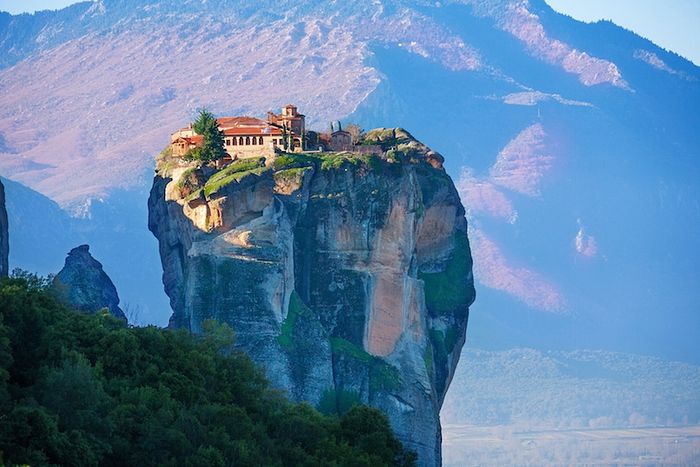
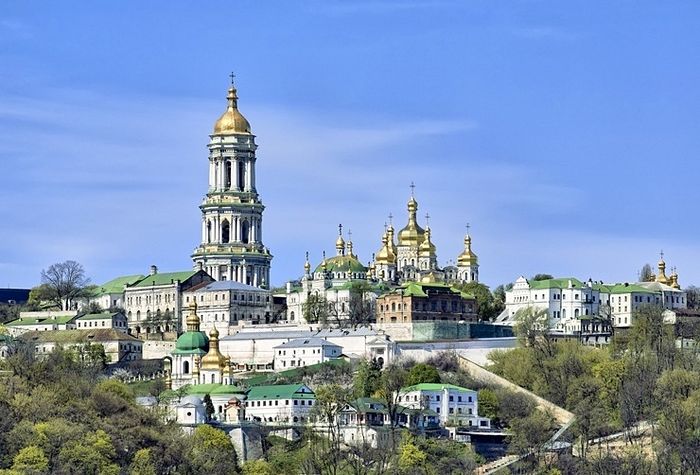
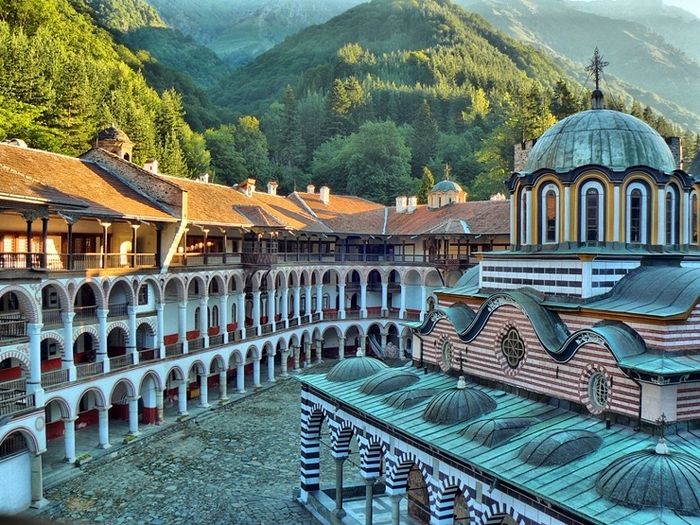
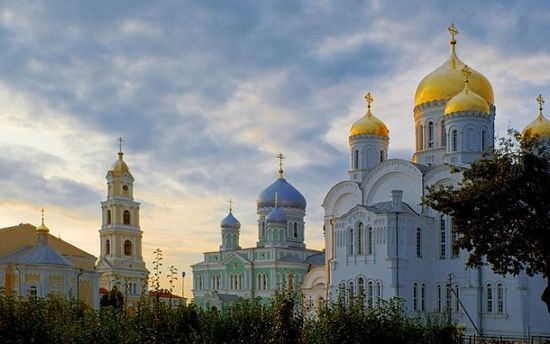
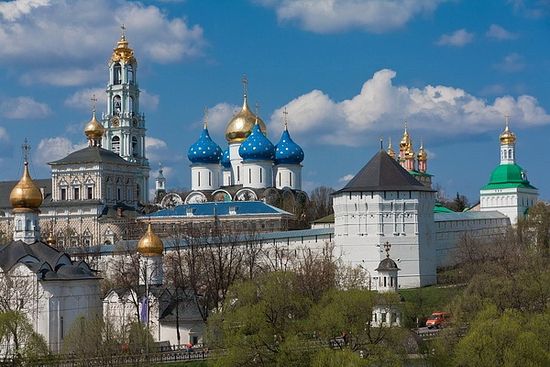
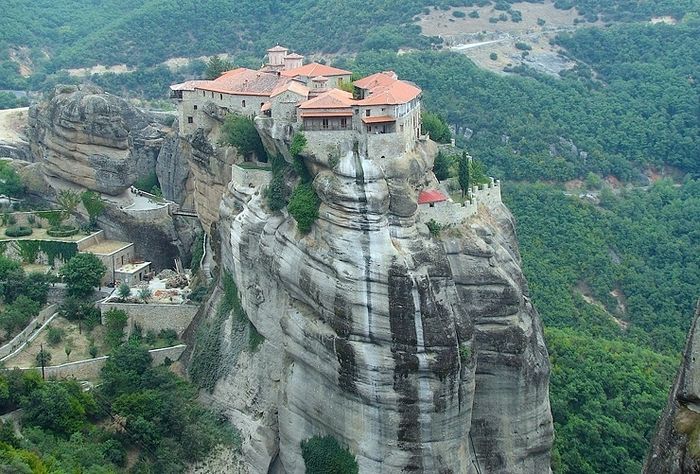
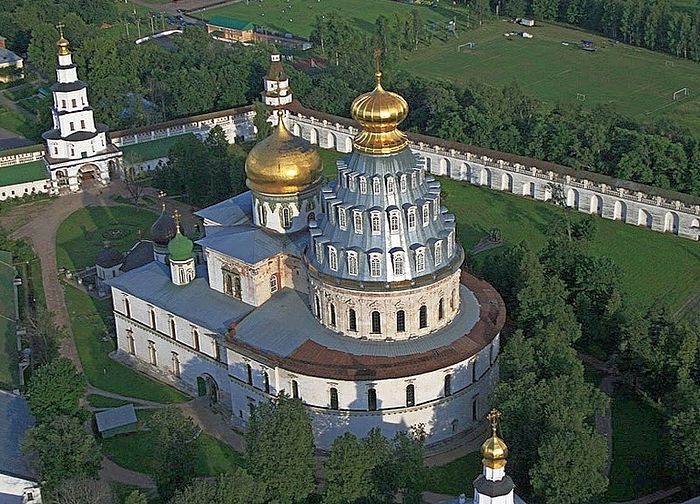
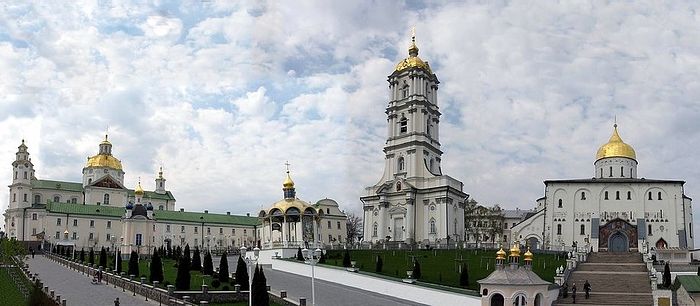
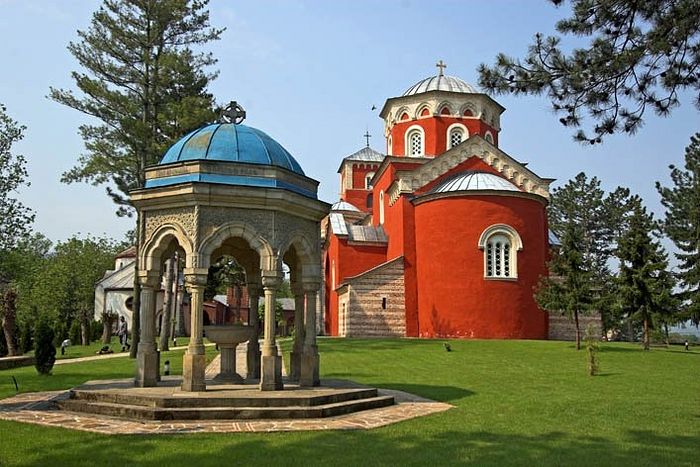
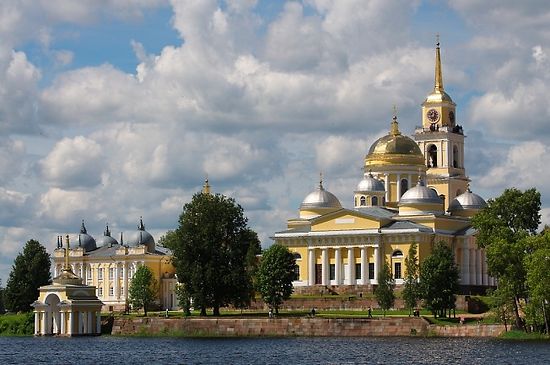
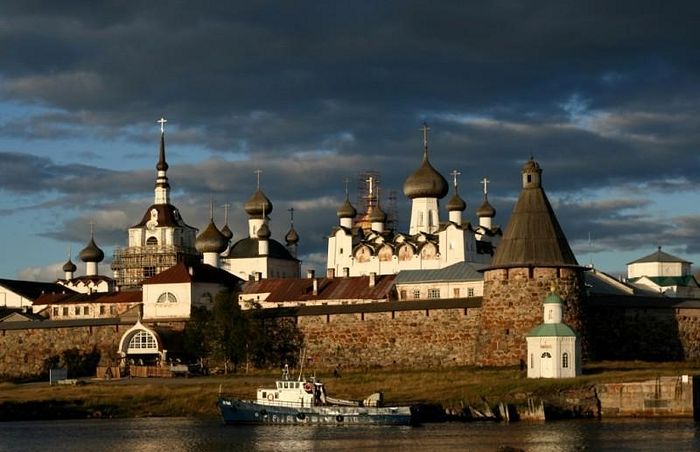
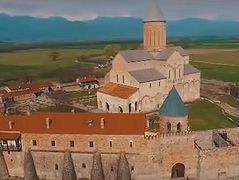
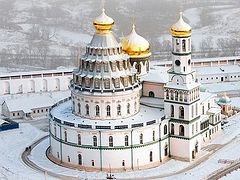
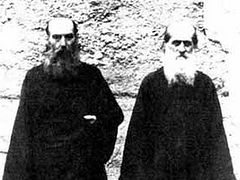
At least try picking one in every country!